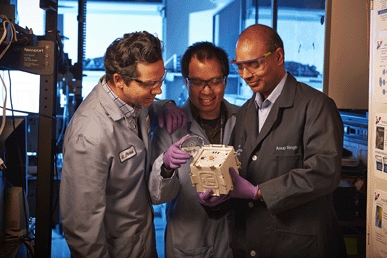The device is expected to be used in emergency rooms in the event of a bioterrorism incident.
‘This is an unmet need for the nation’s biodefence program,’ said Anup Singh, senior manager for Sandia’s biological science and technology group. ‘A point-of-care device does not exist.’

Sandia’s work is funded by a recent grant worth nearly $4m over four years from the US National Institute of Allergy and Infectious Diseases, part of the US National Institutes of Health.
Sandia’s biosciences and microfluidics program areas have successfully worked on notable projects that include MicroChemLab, a lab-on-a-chip technology developed in the early 1990s; plus the so-called saliva device, an instrument designed primarily to assesses dental disease; and a follow-up technology, RapiDx, developed in the early-to-mid 2000s.
‘This will take things to the next level,’ said Singh in a statement. In addition to the broader suite of toxins and bacterial agents that the device would test for, the project includes comprehensive testing with animal (mouse) samples.
This is an important step, Singh said, since toxins may behave differently in live animals and humans than in laboratory blood samples.
‘We are getting closer and closer to translational elements of research, which involves testing in animal and clinical facilities. This is part of the maturation of our bioresearch activities at Sandia.’
The need for diagnostic devices for biodefence is not going away, Singh said, since there are always new diseases springing up that lack good diagnostic assays.
‘Plus, we want dual-use devices that combat both man-made and nature-made problems,’ he added. ‘We’re not just going to wait for the next anthrax letter incident to happen for our devices to be used and tested; we want them to be useful for other things as well, like infectious diseases.’




Nanogenerator consumes CO2 to generate electricity
Whoopee, they've solved how to keep a light on but not a lot else.